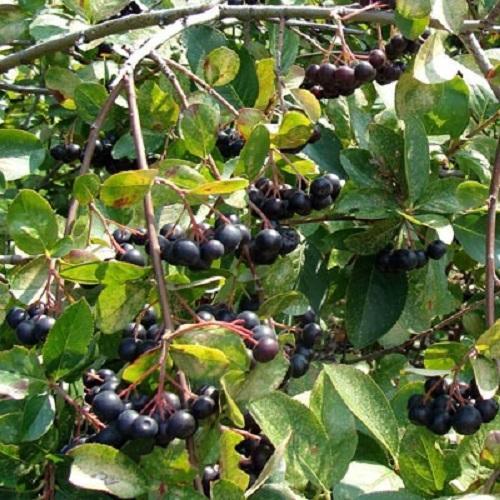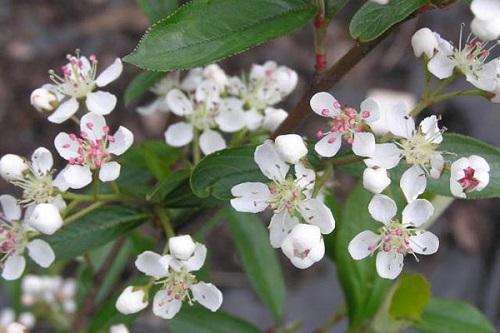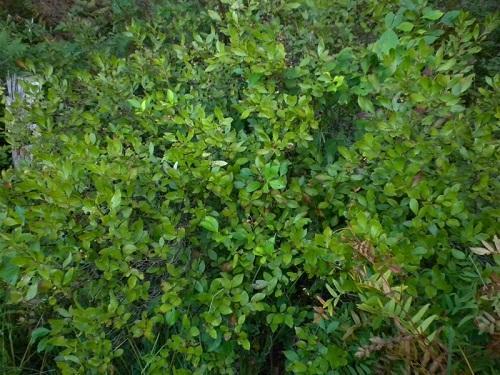Universal shrub for beauty and benefit - plum chokeberry

Chokeberry is a family of Pinks and is one of the types of chokeberry, which is commonly called the chokeberry. Chokeberry itself is a natural hybrid variety derived from black chokeberry and arbutus-leaved chokeberry.
Characteristics of the variety

The variety got its name due to the shape of plum-like leaves - they are slightly elongated and with a slight pubescence on the back.
The plant is a fairly tall edible shrub. In nature, its height can reach 7 meters, but as a garden culture, specimens above 5 meters are rare. Growing season chokeberry slate lasts from April to September, and flowering occurs in May. During this period, the bush is covered with very beautiful fragrant white flowers (sometimes with a pink tint), in the center of which are red stamens.
The active fruiting of the shrub begins from the sixth year of life, the berries ripen at the end of summer and have a dark purple, almost black color. Fruits are quite large, each weighing up to 1.5 g, hanging with stuffed brushes.
In spring and summer, the deciduous cap of the chokeberry is rich green, and by autumn it acquires a red hue.
Growing features

Chokeberry is generally unpretentious, most often grown for delicious berries, but also well suited as ornamental plant... As a hedge, the shrub looks very beautiful, moreover, it branches well and lends itself to cutting.
Almost any soil is suitable for planting chokeberry, but it develops best and bears fruit on nutritious and moist loams with moderate acidity. A little shading is allowed, but no more, because the bush needs good lighting.
Shrub care includes:
- Abundant watering... It is especially important to regularly moisten the ground under the bush during the fruiting period. With a lack of moisture, the berries can become small and dryish.
- Periodic feeding... In early spring, apply nitrogen fertilizers under a young bush, and when flowering ends, feed it with nitroammophos (100 g for one plant). On poor and sandy soils, every two years it is necessary to pour a bucket of organic matter under the bush in parallel with the introduction of phosphorus-potassium preparations. Old bushes, exceeding 1 m in diameter, do not need to be fertilized.
- Systematic pruning... To avoid thickening of the shrub and to ensure a bountiful harvest, the chokeberry should be regularly pruned. In this case, it is necessary to leave at least 3-4 of the strongest branches up to 4 years old (do not touch the younger shoots at all), and cut out the weak and damaged ones. If the plant is used for decorative purposes, it is enough to simply remove the branches that have borne fruit.
- Prevention and treatment of diseases... Dig up the trunk circle annually and treat the bush with biological products (Fitosporin against diseases, Verticillin - against pests).